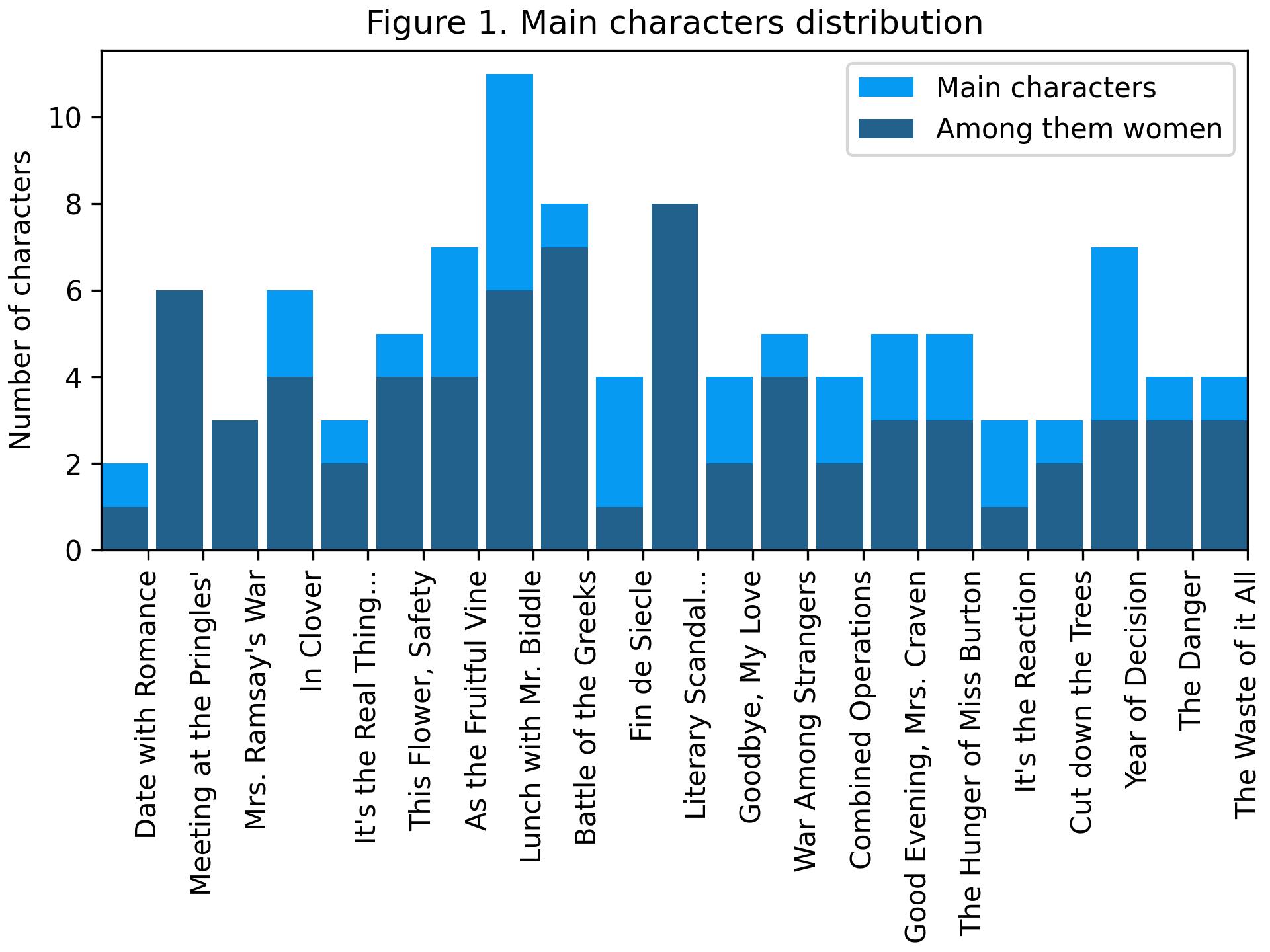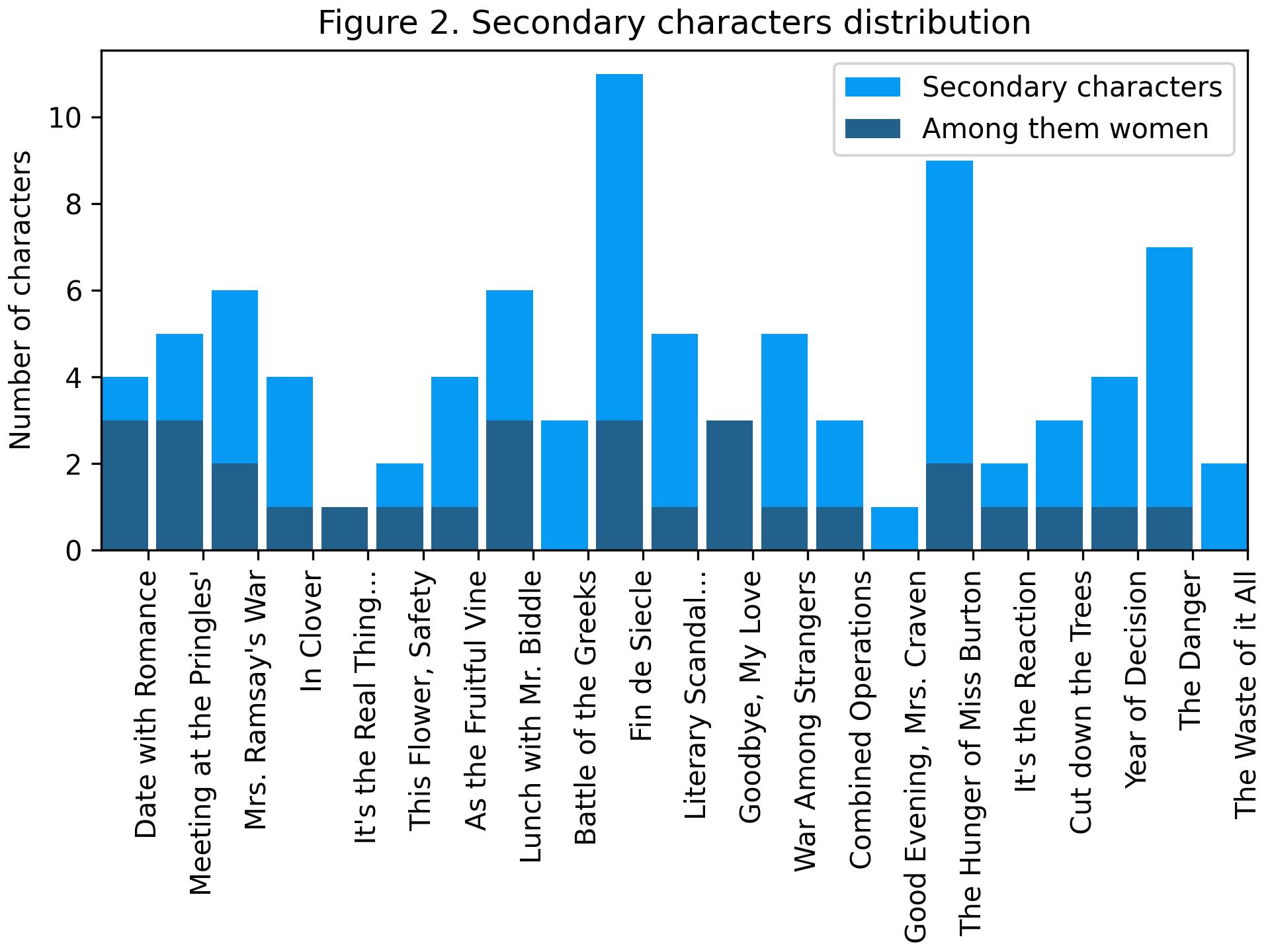
During WWII, British writer Mollie Panter-Downes (1906-1997) composed twenty-one short stories for The New Yorker, depicting the lives of middle-class British women facing the challenges of parting, fear, and scarcity during wartime. Her fiction developed a distinctive style that did not fit within the traditional canon of either male or female British war literature by creating a narrative refuge through the construction of a fictional world in which she mitigates the negative consequences of war. Using Named Entity Recognition (NER) for automatic character extraction and Sentiment Analysis (SA), this study reveals two primary strategies in her work: demasculinizing the texts and transferring negative emotions from the characters’ speech to the author’s narrative voice, thereby creating a narrative refuge for her female characters.

The gender distribution of characters in Panter-Downes’s texts, as well in the corpus by other British wartime authors and The New Yorker writers, was extracted using the SpaCy NER model and the gender-guesser Python package (Explosion AI, ByRatings) with algorithmic adjustments to avoid character miscounting 1 . Since SpaCy’s parsing recognizes only proper names referring to people, Panter-Downes’s texts were manually analyzed to classify characters as major (those with lines of direct speech, influencing the narrative more significantly) or secondary only mentioned in the text) and by gender (male and female). The Mean Absolute Percentage Error of the automatic extraction of the male-female character ratio against the manual one was 18.21%, without significantly distorting the ratio of (fe)male characters.

The overall distribution of major and secondary characters showed that women are typically Panter-Downes’s protagonists, while male characters are often exiled to backstage, playing minor roles in story development (Figures 1 and 2). Her male protagonists generally lack traditional masculine traits of strength and warrior-like qualities, often depicted as elderly, whose military impulses to fight are hilarious, (as Major Marriot in “It’s the Real Thing This Time”) or as young clerks and artists preferring comfort and peace (like Mr. Masters in “It’s the Reaction” or Don Merrill in “Fin de Siècle”). This exile of masculinity to the battlefront and backstaging the remaining male characters, shelters the imaginary world from the influence of war, traditionally represented by men.
Another strategy to protect the fragile world of Panter-Downes’s short stories is the isolation of negative emotions related to war aspects like bombings, bereavement, and food rationing in the author’s narrative rather than in the characters’ speech. SA provides a quantitative method for estimating sentiments, attitudes, or emotions in texts, assessing their distribution in both characters’ and author’s speech. Although the applicability of SA in literary studies is debated, with criticisms about the divergence in results (Kim 2022) and the heuristic uncertainty of different SA algorithms (Rebora 2023, Bowers / Dombrowski 2021), rule-based VADER (Valence Aware Dictionary for Sentiment Reasoning) was chosen for this analysis (Hutto / Gilbert 2014). As demonstrated by Bizzoni and Feldkamp, the outcomes of rule-based algorithms are close to the sentiment scoring of human annotators (Bizzoni / Feldkamp 2024). Also, the results of the VADER model, unlike those from “black box” transformers or pre-trained models, are non-dependent on corpus and heuristically predictable.

The analysis demonstrated that in the majority of Panter-Downes’s stories, characters’ speech shows fewer negative emotions compared to the author’s narrative (Figure 3). Exceptions include stories with male protagonists (“It’s the Real Thing This Time”) or a higher proportion of direct speech where female characters discuss unpleasant topics (“Literary Scandal at the Sewing Party”). In contrast, both British male (0.11) and female authors (0.16) displayed a lower degree of sentiment protection in their works compared to Panter-Downes (0.48), which also contrasts with British female authors 2 . Protecting her characters from negative emotions facilitates isolating her fictional world from the harsh realities of war.
Mollie Panter-Downes’s wartime short stories offer an alternative to the canonic view of British WWII literature by demasculinizing her narration and shielding her characters from war-related negative emotions, creating a narrative shelter. The findings underscore the effectiveness of combining NER and SA in literary analysis, offering new insights into the gender dynamics and sentiment expression by male and female war writers.
The links to the corpus description, additional figures, and code can be found in the repository https://github.com/susurofu/SA-Revelation-of-War-Effacing-Strategies-in-Mollie-Panter-Downes-Short-Stories.
Calculated as a ratio of the difference between the direct speech sentiment and the author’s speech sentiment scores divided by the absolute value of a whole story’s sentiment score.